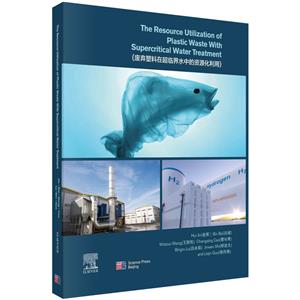预估到手价是按参与促销活动、以最优惠的购买方案计算出的价格(不含优惠券部分),仅供参考,未必等同于实际到手价。
-
>
湖南省志(1978-2002)?铁路志
-
>
公路车宝典(ZINN的公路车维修与保养秘籍)
-
>
晶体管电路设计(下)
-
>
无头案:雍正暴亡之谜
-
>
基于个性化设计策略的智能交通系统关键技术
-
>
花样百出:贵州少数民族图案填色
-
>
识木:全球220种木材图鉴
废弃塑料在超临界水中的资源化利用 版权信息
- ISBN:9787030754479
- 条形码:9787030754479 ; 978-7-03-075447-9
- 装帧:平装胶订
- 册数:暂无
- 重量:暂无
- 所属分类:>>
废弃塑料在超临界水中的资源化利用 本书特色
希望引入新技术来解决现有废弃塑料处理问题,为相关领域的从业者和科研人员提供新的思路
废弃塑料在超临界水中的资源化利用 内容简介
随着科学技术的发展,塑料制品给社会带来了巨大便利,然而塑料制品巨大用量的直接结果是塑料废弃物的急剧增加,严重威胁到生态环境和人类社会的健康发展。传统塑料处理技术如填埋、焚烧、造粒再生、热解等,存在着污染环境、资源浪费、再生制品性能差、成本高等问题。众所周知,超临界水具有较高的扩散性和溶解度,较低的介电常数和粘度,近年来,超临界水处理技术在化石能源高效清洁利用方面得到了广泛应用。在这本书中,我们将从*基本的东西开始,首优选行废弃塑料现状及危害、传统处理方法的弊端、超临界水处理废弃塑料的原理、工艺流程等基础知识的普及。随后深入到主题,总结了前人的研究成果,重点介绍了超临界水气化塑料、液化塑料、污染物共处理、二氧化碳固定等方面的实验研究和模型建立,展示了超临界水处理废弃塑料技术的近期新实验方法和研究成果。这本书集中提供了超临界水在废弃塑料资源化利用方面的研究工作,希望引入新技术来解决现有废弃塑料处理问题,为相关领域的从业者和科研人员提供新的思路,为该技术的工业应用提供实验数据和理论依据,推动废弃塑料利用行业的快速发展。
废弃塑料在超临界水中的资源化利用 目录
- >
随园食单
随园食单
¥37.0¥48.0 - >
伯纳黛特,你要去哪(2021新版)
伯纳黛特,你要去哪(2021新版)
¥15.9¥49.8 - >
罗庸西南联大授课录
罗庸西南联大授课录
¥13.8¥32.0 - >
苦雨斋序跋文-周作人自编集
苦雨斋序跋文-周作人自编集
¥6.9¥16.0 - >
诗经-先民的歌唱
诗经-先民的歌唱
¥12.3¥39.8 - >
上帝之肋:男人的真实旅程
上帝之肋:男人的真实旅程
¥19.3¥35.0 - >
企鹅口袋书系列·伟大的思想20:论自然选择(英汉双语)
企鹅口袋书系列·伟大的思想20:论自然选择(英汉双语)
¥8.4¥14.0 - >
姑妈的宝刀
姑妈的宝刀
¥11.4¥30.0
-
2022图书×抽奖盲袋
¥9.9¥25 -
2023读书月阅读盲盒——天黑,闭眼,刀谁?
¥42.3¥158 -
2022读者节纪念徽章-三星会员专属
¥45¥45.6 -
2023读书月阅读盲盒——我什么场面没见过?
¥42.3¥158 -
2023读书月阅读盲盒——去码头整点什么薯条?
¥42.3¥158



















